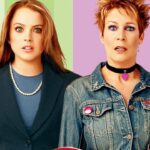The Evolution of the Disney Villain
One of my pet peeves is nostalgia and the way it warps peoples’ perceptions. With everything from politics to pop culture, we’re always hearing about how great things used to be, and how much it all sucks now. We can observe trends within a particular time period, but these tendencies are often exaggerated by consumers. This is certainly pertinent to the Disney fandom. The online Disney community often glamorizes past decades, insisting that anything recent is disappointing if not downright bad. When it comes to Disney villains, the argument tends to be that past antagonists were bold and dramatic, while newer ones are boring and involve predictable plot twists. As with many generalizations and stereotypes, there is a shred of truth here. However, it’s exaggerated and ignores a lot of counterexamples. I’d like to take a look at some of these characters for Halloween, excluding live-action counterparts, most of the anthology films, and antagonists who aren’t really villains – for example, Aunt Sarah from Lady and the Tramp.
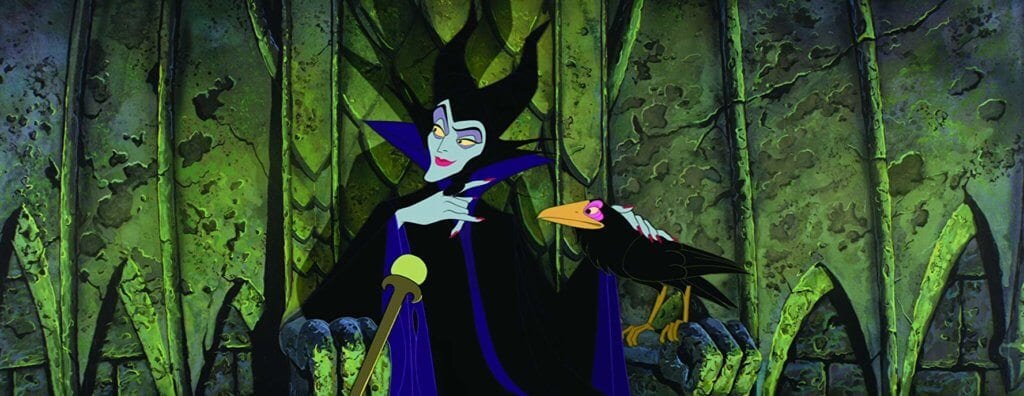
1937-1961: Wicked Matrons, Manipulative Opportunists, and the Comically Insane
Disney’s animated villains had a strong start with the Evil Queen, Snow White’s jealous, murderous stepmother. Early Disney films didn’t do much of anything to humanize their antagonists, but I actually don’t mind. Their simple characterization is complemented by incredible character designs, powerhouse vocal performances, and overall dramatic flair. Lucille La Verne gives the Queen an inimitable sense of ambition regardless of the nature of her goal. Really, though, motivations like wanting to be the most beautiful or seeking revenge for not being invited to a party display just how evil these characters are. They’re so evil they would gladly kill people over nothing, contrasting them perfectly to the virtuous heroes. People often cite Maleficent (a wonderfully cunning, intimidating Eleanor Audley) as the most “petty” villain for her rage at not receiving an invitation to Aurora’s christening. Still, at least that’s something someone did to offend her. The Queen wants to murder her own stepdaughter just for being beautiful, and Lady Tremaine (also voiced by Eleanor Audley) treats her stepdaughter like a slave for no reason at all. She doesn’t seem to have a motivation, outside of wanting her daughters married, which has nothing to do with Cinderella personally. Sometimes people in real life are nasty for no apparent reason, so I think that, with proper execution, it can work in a movie too.
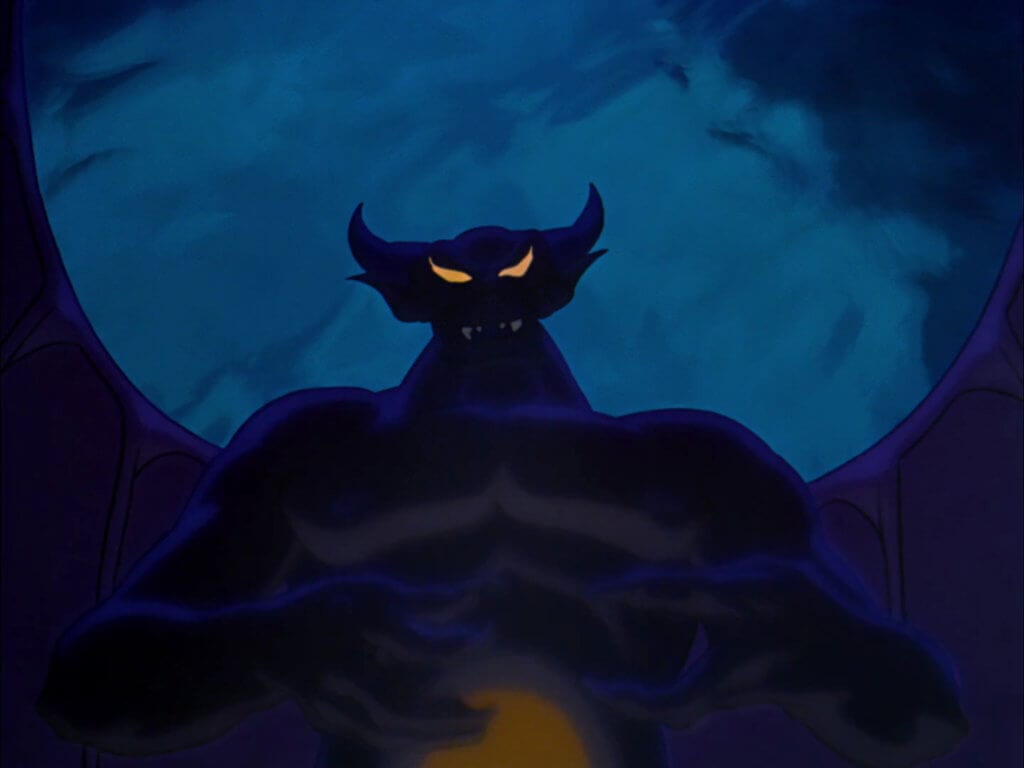
I think it’s fair to count some villains from the package features in this group, specifically the Chernabog from the Fantasia segment Night on Bald Mountain. He’s obviously not a matron, but I always think of him as this epic force of evil like the Queen or Maleficent. We also have a category during this period of characters who aren’t exactly evil in the traditional sense. They’re hedonistic opportunists who manipulate or abuse the protagonist to turn a buck, like Stromboli or Honest John from Pinocchio. Finally, we have mentally unstable villains who tend to provide some of the comic relief, like Captain Hook, the Queen of Hearts, and Cruella De Vil. Cruella is, of course, the reigning queen in this category, but I also like the manic unpredictability of the Queen of Hearts. I’m not huge on her Fred Flintstone-esque appearance, but hey, they can’t all be Maleficent.
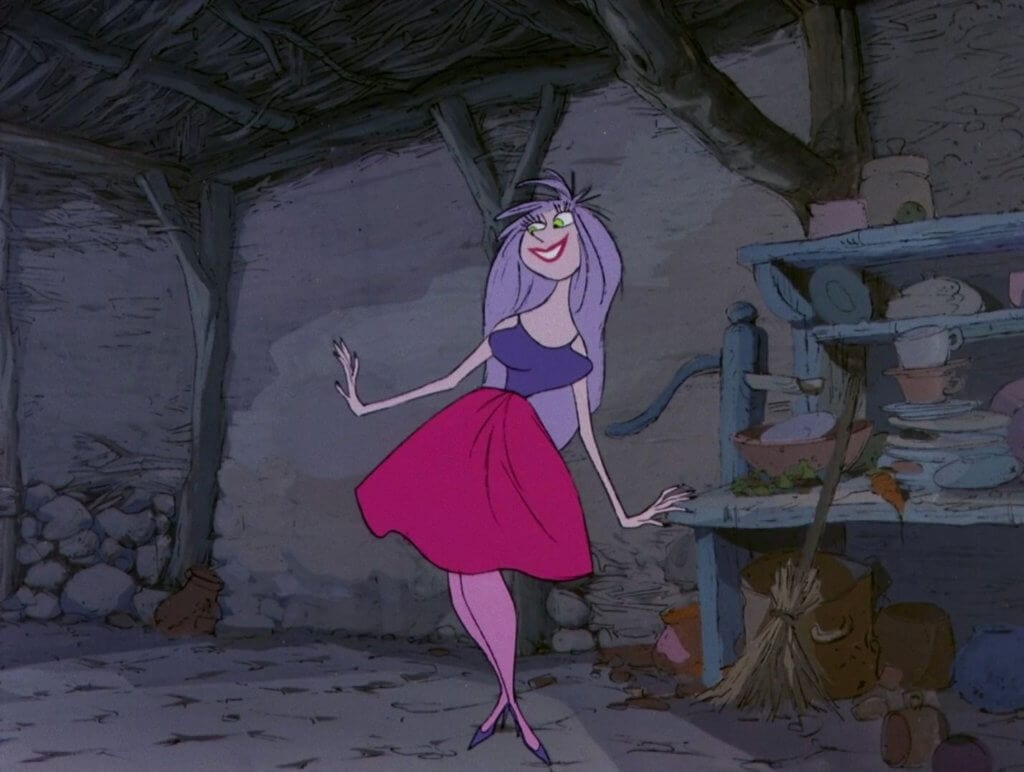
1963-1988: Minor Threats, Badasses, and Sleazebags
Things changed for the worse starting with Madame Mim. This character doesn’t appear until almost the end of the already-short The Sword in the Stone. She’s another zany character who leans into the comedy, and they attempt to make her a serious threat to Merlin and Arthur as well. Unfortunately, I would put the emphasis here on the word “attempt,” as she’s neither very funny nor intimidating. Four years later, The Jungle Book delivered a more threatening bad guy in the studio’s version of Shere Khan. Unfortunately, he also isn’t in the film much, but his design is fantastic. George Sanders also brings a commanding, bellowing vocal performance to the character. Although I like the film overall, Edgar in The Aristocats is really a ridiculous character. He gets defeated by a group of cats, mostly out of sheer ineptitude and stupidity rather than the cats’ ingenuity. And again, exactly like Mim, he just isn’t funny. We get much of the same with Prince John in Robin Hood and Madame Medusa and Mr. Snoops in The Rescuers.
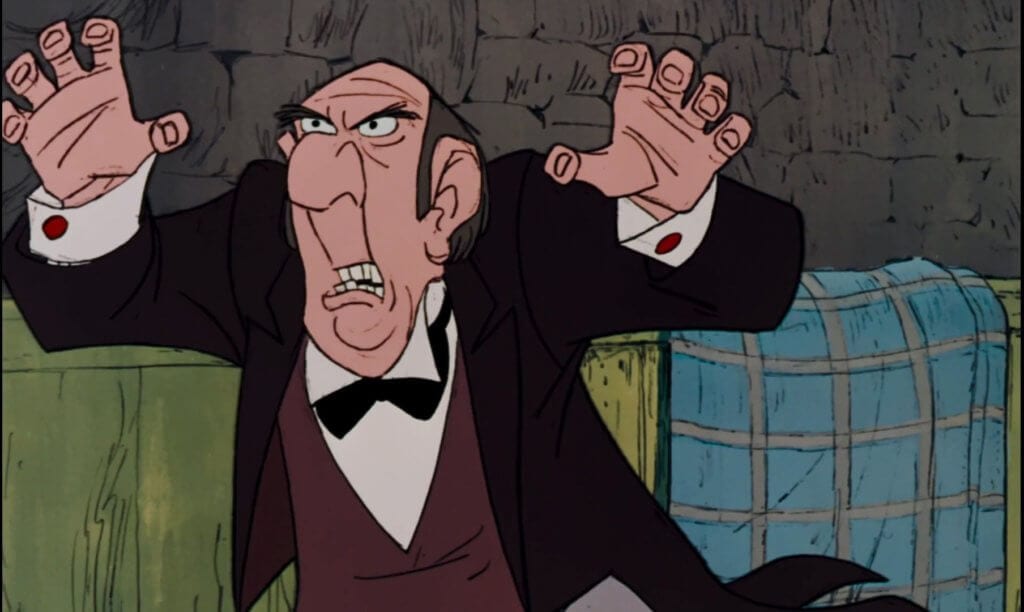
Amos Slade in The Fox in the Hound is better, in that he does pose a serious threat to Tod and Widow Tweed’s wellbeing, and it’s very frustrating to watch. The situation he puts the Widow in is infuriating and forces her to make a heart-rending decision. We got a couple of great ones in John Hurt’s Horned King from The Black Cauldron and Vincent Price’s Ratigan in The Great Mouse Detective. The Horned King is beyond creepy, and thoroughly intimidating. Meanwhile, Ratigan poses a threat while also being quite campy and amusing. However, another dud came in the form of the boring nothing that is Sykes in Oliver and Company. Sykes is a loan shark whose only motivation is greed. Fun for the whole family.
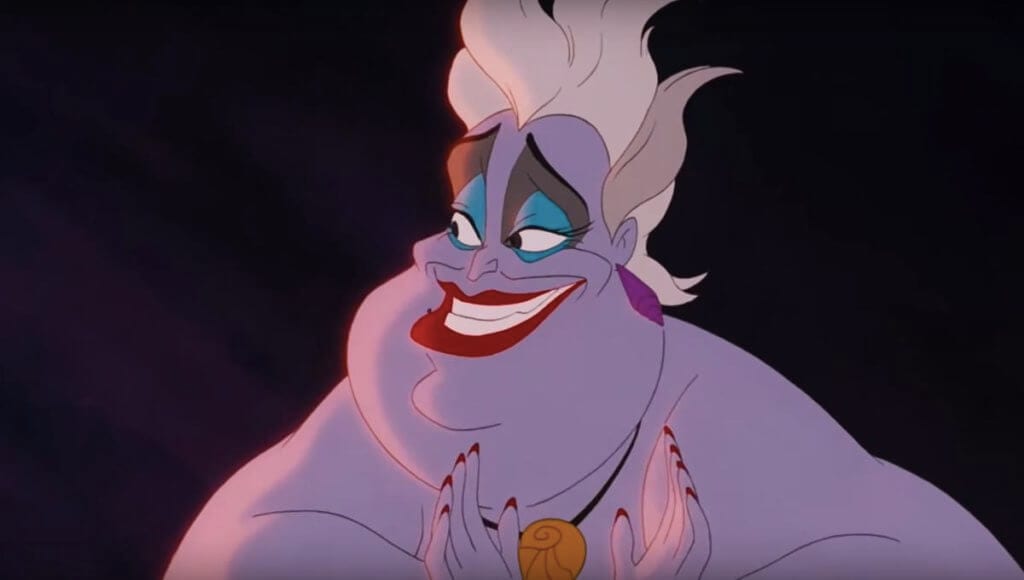
1989-1994: Bold, Dramatic, Repetitive
With this, we come to some of the most popular Disney villains. The Little Mermaid revitalized the iconic animation studio in more ways than one. Much like the film’s music and spunky heroine, Ursula (Pat Carroll) brought something new to the Disney villain line-up. She was sassy, dramatic, colorful, and wildly different from demure characters like Maleficent and Lady Tremaine. She was unlike the manic Cruella, too; something truly unique. Rather than beauty or party invites, Ursula hungers for something more tangible: Triton’s trident and power. In spite of all its critical and box office success, one occasional criticism of the Disney Renaissance is that it got kind of repetitive after a while, eschewing bold narrative and aesthetic choices in favor of a formula based on The Little Mermaid’s success. In some ways, this is less fair than others, but I think it’s not without reason to say such of the period’s villains. George C. Scott as poacher Percival McLeach is a major outlier in the period, which makes sense, as The Rescuers Down Under shares very little with the other films. However, I do like this movie, and McLeach is an entertaining, scary villain.
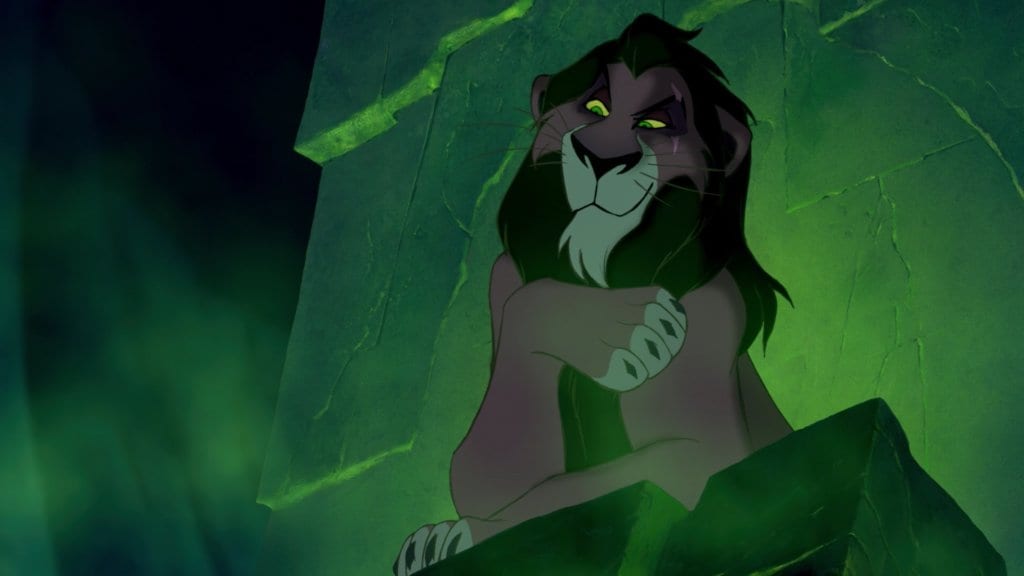
Gaston is one of my favorite Disney villains. From Andreas Deja’s design, reminiscent of Brom Bones from Disney’s Sleepy Hollow short film, to Richard White’s booming vocals, this character was a landmark in Disney animation. Beauty and the Beast directors Kirk Wise and Gary Trousdale even remark in the film’s audio commentary that, in any other Disney film, Gaston would be the hero, the handsome prince. Jafar’s desire for the Sultan’s power is reminiscent of Ursula, however, unlike her, he’s still in good standing with his unknowing victim. Jafar is another Andreas Deja creation, with another bright red costume. What really makes him stand out is the complexity of his facial expressions and his voice, provided by Jonathan Freeman. Scar is the most familiar of these villains, being that he’s essentially Jafar as a lion. He’s also animated by Andreas Deja, and I do like his design, especially his eyes. Jeremy Irons’ performance is really something special, and he manages to be both funny and menacing.
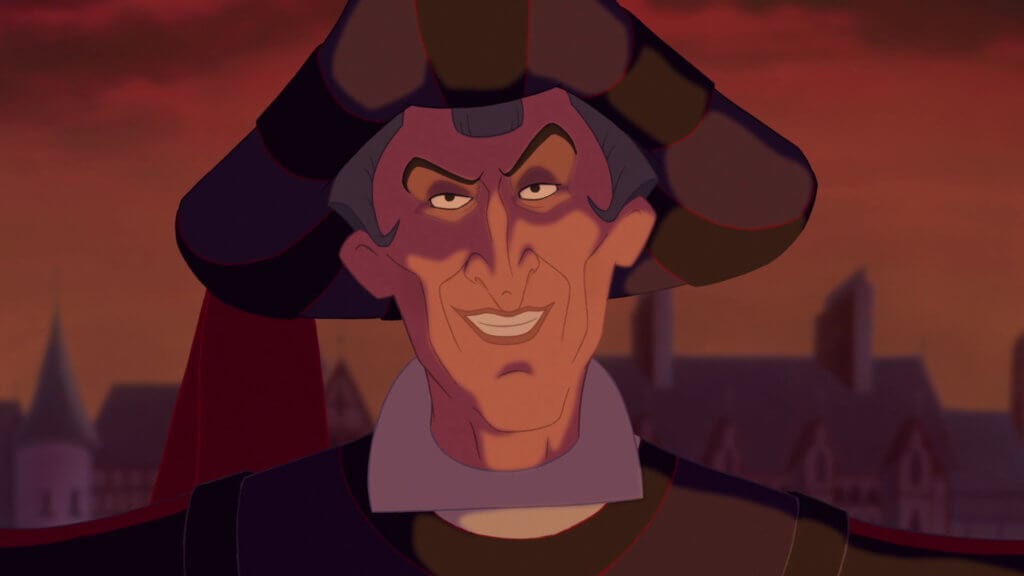
1995-2002: Some Greatness Mixed in with a Lot of Mediocrity
1995’s Pocahontas was a disappointment in a lot of ways. Sure, it has some lovely sequences and great music, but the story lacks excitement, and the characters are dull as dishwater. This couldn’t be truer of the film’s villain, Governor Ratcliffe. I’m not sure why the filmmakers even chose this historical figure as the source of racism, greed, and all evil within the film. However, everything is oversimplified in Pocahontas, so I guess they didn’t want to write an interesting villain for fear of distracting viewers. The following year would bring The Hunchback of Notre Dame’s Frollo, my favorite Disney villain. He excels as a character in every area that Ratcliffe failed and then some: motivation, music, and visual presentation. He’s unlike any other Disney villain because the filmmakers didn’t pull any punches. He’s racist like Ratcliffe, but here it’s done well because Frollo’s beliefs are born out of conviction. He believes the Gypsies are a blight on the Earth, and his city in particular, regardless of how hypocritical this may prove to be. 1997 saw James Woods’ turn as Hades in Hercules. He’s hilariously voiced and animated and one of the best parts of the movie. Mulan’s Shan Yu and Tarzan’s Clayton are really disappointing. Shan Yu has a decent design and voice courtesy of Miguel Ferrer, but he’s just really boring.

Meanwhile, Clayton is funny at first, thanks to Brian Blessed, but he gets dull real quick once he’s revealed as the villain. Dinosaur’s Kron is much of the same, just really dull and forgettable. However, Yzma and Kronk, The Emperor’s New Groove’s villains, are extremely underrated. They’re hilarious and sufficiently menacing when necessary. Yzma is a fast talker, and her disregard for other people will bust your gut. Meanwhile, Kronk isn’t so much a villain as an inadvertent henchman who really just wants to bake spinach puffs. Atlantis: The Lost Empire features James Garner as commander Rourke, a mercenary with his eye on the city’s most precious relic. He’s not a great character, and his actions are all motivated by greed, but he’s entertaining enough, and I like Garner’s performance. Kevin Michael Richardson gives a serviceable performance as Lilo and Stitch’s Captain Gantu, who looks like a whale. He chases Stitch and tries to apprehend him. That’s pretty much it.
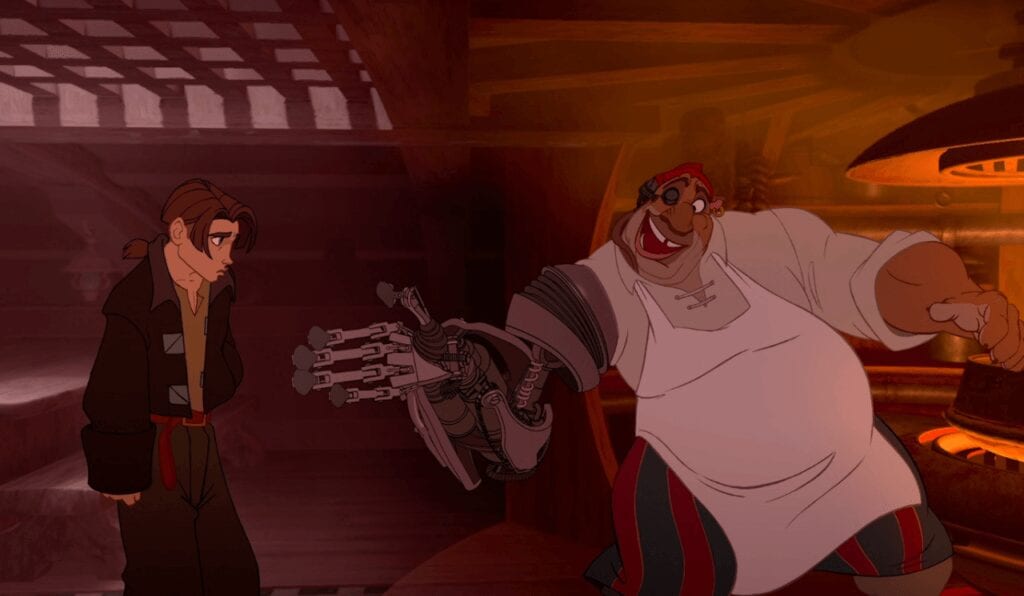
2002-2010: The Good, the Bad, and a Return to Form
Treasure Planet’s John Silver is a feat of animation. His design is incredibly appealing and detailed, blending traditional hand-drawn animation with CGI elements. Brian Murray delivers an excellent, under-appreciated performance here. I recommend this film religiously, and Silver is a big reason why. He’s a complex character, and by the end, he does put Jim’s needs before his own, a rare display of character growth for a Disney antagonist. Home on the Range features Randy Quaid as Alameda Slim, simultaneously the best and worst thing in a horrible movie. His motivation is boring: he wants land. The reveal that he’s the villain seems redundant, as anyone could have guessed as much by the time we learn that someone is buying up farms. Despite being boring, unfunny, and non-threatening, he does have a sequence where he yodels to take control of cows. This one scene is better animated, funnier, and more engaging than anything else in the film.

Meet the Robinsons’ Bowlerhat Guy, voiced by the film’s director, Stephen J. Anderson, is a bit of an odd duck. We get to know this character at two stages in life that are reconciled later in the film. His jokes vary in quality, but he’s never scary or intimidating. Overall, I do like this flawed execution, just as I enjoy the film itself. I wish this villain, as well as several other characters, was given more room to breathe, and that the eventual reveal was more natural within the film. The 2000s ended on a strong note with Dr. Facilier (Keith David) and Mother Gothel (Donna Murphy) of The Princess and the Frog and Tangled, respectively. I’m surprised these two don’t get more praise, as they brought back a lot of things people typically like about Disney villains. They have grandiose musical numbers, interesting backstories, dynamite character designs, and amazing vocal performers behind them.
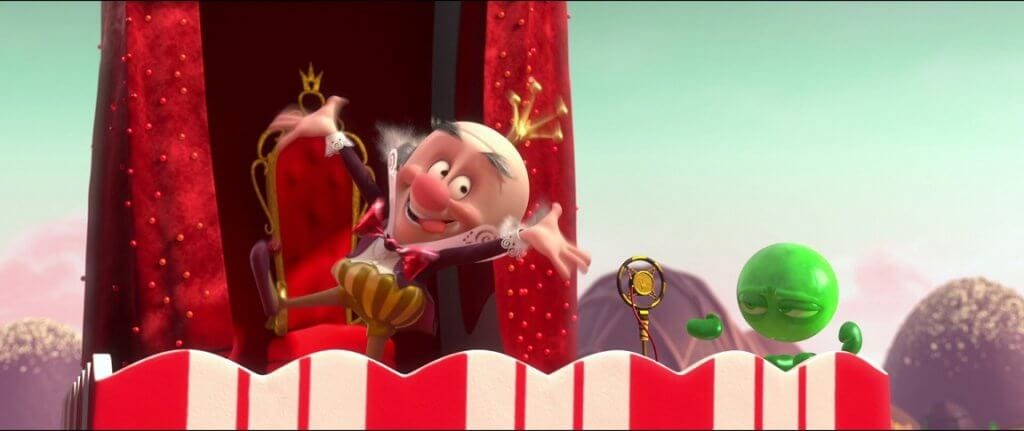
2012-2016 (at least): The Dreaded Plot-Twist Villains
This trend began with Wreck-It Ralph’s King Candy, voiced by Alan Tudyk. It isn’t quite clear for most of the film what exactly is going on with this character. However, once the cat’s out of the bag, everything makes sense in retrospect. This is a really well-done plot twist, and frankly, it’s a shame they didn’t quit while they were ahead. Frozen’s Prince Hans of the Summer Isles (Santino Fontana) is a fractured character who comes off as two totally different people before and after his reveal. It’s difficult to reconcile the two, and the story’s justification really plays it as more of a forced moral message as opposed to organic storytelling. Yokai/Professor Callaghan (James Cromwell) in Big Hero 6 fares a little better, although I still think more time could have been dedicated to making this character’s turn feel believable. And, unlike the former two plot-twist villains, this one was obvious almost from the film’s first scene. Zootopia’s Mayor Bellwether (Jenny Slate) is particularly weak. It’s a great film, and her motivation/plan is pretty well-thought-out, but her voice, design, and presence leave a lot to be desired. This was clearly done intentionally to hide her in plain sight, but the results speak for themselves. Pixar even carried this category further with Coco and Incredibles 2, the former doing it pretty well and the latter not so much. Overall, this is an annoying trend, and I hope they don’t continue it with Frozen II.
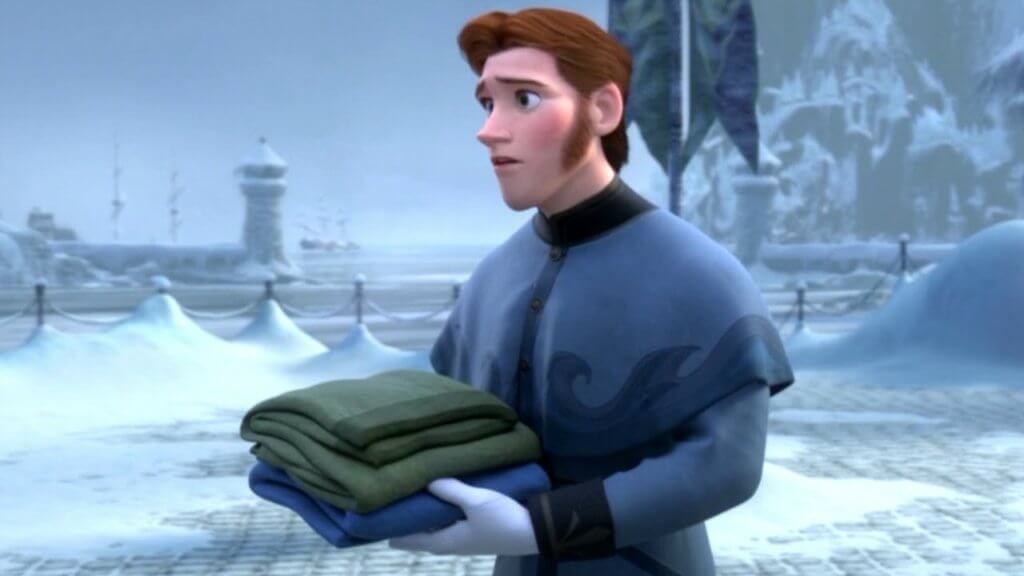
That being said, it is frustrating how people seem to see Disney villains as being historically good and recently bad. This depends on a lot of factors, and in my opinion, each era of Disney animation has a mix of compelling and weak villains. The plot-twist streak is annoying, but it’s not even my least favorite villain trend Disney has had. The silly, comedic villains of the ’60s and ’70s are worse to me because they rarely pose any real threat, and it’s evident that they weren’t very well thought out. That being said, what do you think? Do you have a favorite villain or time period for Disney animated villains? Let me know in the comments and stay tuned to Geeks + Gamers for more geeky content! Happy Halloween!




